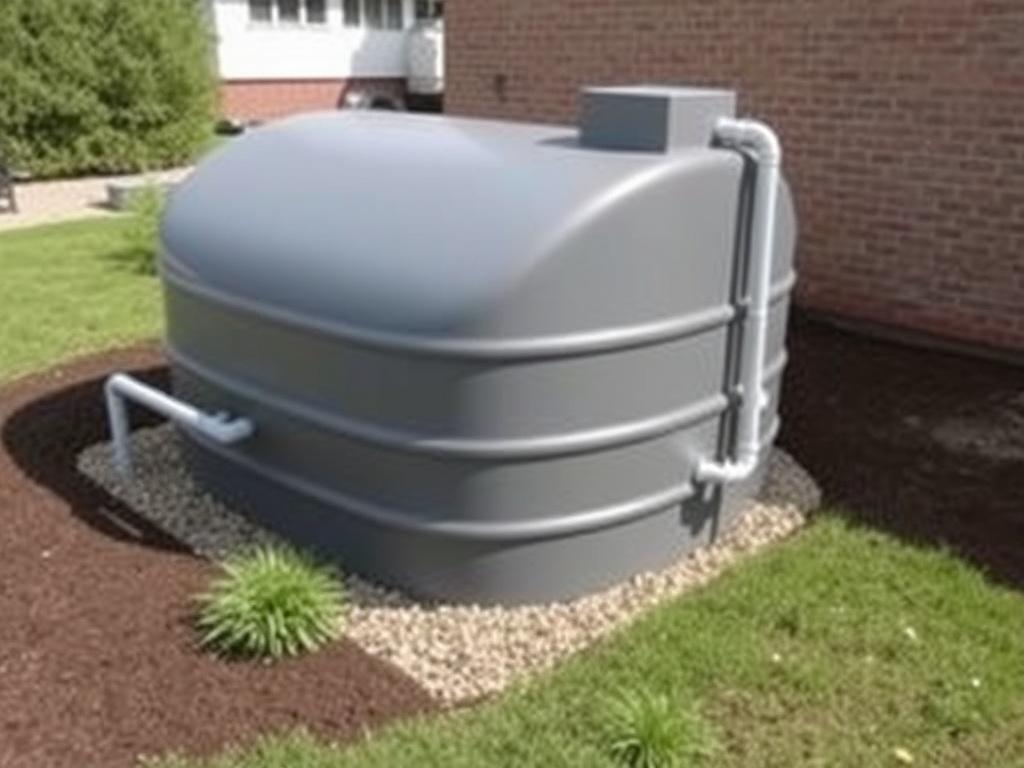When it comes to managing wastewater in a school, installing a reliable septic tank system is crucial. Schools have unique needs due to the number of students, staff, and varying water usage patterns throughout the day. A septic tank for a school requires careful planning, design, and maintenance to ensure hygienic conditions, environmental safety, and efficient operation. In this article, we will explore the key considerations involved in selecting and maintaining a septic tank system for a school, helping decision-makers make informed choices that protect both people and the environment.
- Understanding the Role of a Septic Tank for a School
- Why Schools Need Specialized Septic Tank Systems
- Designing a Septic Tank System for a School
- Estimating Wastewater Flow and Tank Size
- Choosing the Right Type of Septic Tank
- Designing Drainfield and Soil Absorption Systems
- Installation and Regulatory Compliance
- Steps to Proper Installation
- Health and Safety Regulations to Keep in Mind
- Maintenance of a Septic Tank for a School
- Routine Maintenance Tasks
- Signs of Septic Tank Problems
- Environmental and Economic Benefits of a Proper Septic System for a School
- Innovations and Future Trends in School Septic Systems
- Community Engagement and Education
- Summary Checklist for Installing and Maintaining a Septic Tank for a School
- Conclusion
Understanding the Role of a Septic Tank for a School
A septic tank is a crucial component of an onsite wastewater treatment system. It collects, treats, and disposes of sewage generated within buildings that are not connected to a municipal sewer system. For schools located in rural areas or places without centralized sewage infrastructure, a septic tank for a school acts as a primary solution for handling waste safely.
Unlike residential septic systems, a septic tank for a school must handle much higher volumes of wastewater. The design should account for peak periods, such as breaks between classes or lunch hours when restroom usage spikes. Additionally, school septic systems need to meet health department regulations to prevent contamination of nearby water sources or soil.
Why Schools Need Specialized Septic Tank Systems
Schools are unique in their wastewater demands because of several key factors:
– **High Occupancy**: Schools host hundreds or sometimes thousands of students and staff. This constant occupancy means large volumes of wastewater are produced daily.
– **Variable Usage Patterns**: Restroom usage can be unpredictable, with peak volumes occurring at certain times of the day.
– **Health and Safety Concerns**: Maintaining hygiene and reducing disease risks is paramount, especially for children.
– **Environmental Responsibility**: Schools have an obligation to prevent pollution, protecting local water bodies and ecosystems.
Taking these factors into consideration, a septic tank for a school must be robust, scalable, and easy to maintain.
Designing a Septic Tank System for a School

Design is one of the most critical aspects when installing a septic tank system for a school. A well-designed system will function efficiently for many years with minimal problems. Here are some important design elements to consider.
Estimating Wastewater Flow and Tank Size
Calculating the average daily wastewater flow is the starting point in septic system design. Generally, guidelines recommend estimating water usage per person per day and multiplying it by the total number of students and staff.
For example:
| Parameter | Value | Notes |
|---|---|---|
| Number of Students | 500 | Typical medium-sized school |
| Number of Staff | 50 | Teachers and administrators |
| Average Water Usage per Person | 20 gallons/day | Includes restrooms, kitchens, etc. |
| Estimated Wastewater Flow | 11,000 gallons/day | (550 people × 20 gallons) |
The septic tank size should be sufficient to retain wastewater long enough for solids to settle and begin decomposition. Regulations usually require tanks to have a minimum volume based on estimated daily flow. For schools, tanks with multiple compartments or larger capacities are common.
Choosing the Right Type of Septic Tank
Several types of septic tanks are available, each with pros and cons. Common options include:
- Concrete Septic Tanks: Durable and long-lasting, concrete tanks are widely used in schools due to their strength and resistance to damage.
- Plastic or Polyethylene Tanks: Lightweight and easier to install, but less durable and susceptible to damage from soil pressure over time.
- Fiberglass Tanks: Resistant to corrosion and lightweight, but can be costly and need proper installation to avoid floatation.
For a school environment, concrete tanks often provide the best balance of durability and cost-effectiveness. Multiple tank systems can also be used to increase capacity and improve treatment efficiency.
Designing Drainfield and Soil Absorption Systems
The septic tank does not dispose of wastewater alone. The effluent flows to a drainfield (also called a leach field) that disperses and filters the water into the soil. Proper drainfield design is critical to prevent groundwater contamination.
Key factors to consider include:
– Soil permeability and characteristics
– Distance from water wells and buildings
– Size of the drain field relative to wastewater volume
– Site topography and drainage patterns
A soil percolation test is essential during site assessments to guide drainfield design.
Installation and Regulatory Compliance

Before installing a septic tank for a school, it is necessary to understand and comply with local health codes, environmental regulations, and building codes. This ensures the installation meets safety standards and will pass inspections.
Steps to Proper Installation
- Site Evaluation: Conduct soil testing, evaluate space availability, and consider the location of water sources.
- Obtain Permits: Secure necessary permits from health and environmental authorities.
- Choose Qualified Contractors: Work with experienced septic system installers familiar with school requirements.
- Follow Manufacturer Guidelines: Install tanks and drainage systems per specifications to ensure performance.
- Conduct Inspections: Schedule inspections during and after installation to comply with regulations.
Health and Safety Regulations to Keep in Mind
Schools operate under strict sanitation and environmental standards, including:
– Minimum distances from drinking water wells
– Proper ventilation of septic tanks to avoid gas buildup
– Adequate fencing or markings around septic areas to prevent accidental damage
– Regular inspections and maintenance schedules mandated by local authorities
Compliance ensures the septic tank system functions effectively without creating health hazards for students and staff.
Maintenance of a Septic Tank for a School
Once installed, maintaining a septic tank for a school is essential for long-term functionality.
Routine Maintenance Tasks
- Regular Pumping: Sludge and scum build-up inside the tank require periodic removal, typically every 3 to 5 years. Schools with high usage may need more frequent pumping.
- Inspecting Components: Check baffles, filters, and tank integrity annually.
- Protecting Drainfield: Avoid parking vehicles or planting deep-rooted trees above the drainfield area.
- Monitoring Use: Educate staff and students to avoid flushing harmful materials that can clog or damage the system, such as grease, wipes, or chemicals.
Signs of Septic Tank Problems
Awareness of early warning signs can save costly repairs:
- Slow drains or backups in school restrooms
- Unpleasant odors near the septic tank or drainfield
- Pooling water or soggy areas above the drainfield
- Staining or algal growth in nearby water bodies
Quick response to any issues prevents disruptions in school operations and environmental harm.
Environmental and Economic Benefits of a Proper Septic System for a School
Investing in a well-designed and maintained septic tank system benefits both the environment and the school’s finances.
| Benefits | Details |
|---|---|
| Environmental Protection | Reduces the risk of groundwater contamination and protects local ecosystems. |
| Cost Efficiency | Avoids costly connection fees or municipal treatment charges when sewer access is unavailable. |
| Longevity | Proper maintenance ensures the system lasts for decades, reducing replacement costs. |
| Health Safety | Prevents exposure to pathogens and maintains hygienic conditions on campus. |
By proactively managing the septic tank system, schools can contribute to community health and sustainability.
Innovations and Future Trends in School Septic Systems
Technology advancements now offer improved options for onsite wastewater treatment, including:
- Advanced Treatment Units: Incorporate aeration and biofilters to enhance effluent quality before it reaches the drainfield.
- Monitoring Systems: Remote sensors and alarms detect malfunctions early, allowing for timely maintenance.
- Water Conservation Measures: Low-flow fixtures and water reuse can reduce wastewater volumes, easing septic system loads.
Adopting these innovations enables schools to operate more sustainably and efficiently.
Community Engagement and Education
Educating students and staff about the role of the septic tank system reinforces responsible water use and waste management. Some schools even incorporate environmental science lessons related to onsite wastewater treatment, turning the septic system into a teaching tool.
Summary Checklist for Installing and Maintaining a Septic Tank for a School
| Step | Action |
|---|---|
| 1 | Conduct site evaluation and soil testing |
| 2 | Calculate wastewater flow and design tank capacity |
| 3 | Select tank type and design drainfield |
| 4 | Obtain permits and hire qualified installers |
| 5 | Complete installation with inspections |
| 6 | Implement regular maintenance and pumping schedule |
| 7 | Educate school community about system care |
Conclusion

Installing a septic tank for a school is a complex but essential endeavor that requires thoughtful design, compliance with regulations, and ongoing maintenance. By considering the unique needs of a school — including high occupancy, fluctuating wastewater flows, and strict health and environmental requirements — schools can develop septic systems that function safely and efficiently for many years. Proper installation not only prevents pollution and protects public health but also provides a cost-effective solution where municipal sewer systems are unavailable. With the added benefits of emerging technologies and community engagement, school septic systems can become sustainable assets supporting both education and the environment. Taking the time to plan, install, and maintain the right septic tank system ensures a healthier future for everyone on campus.
Помогла вам статья?






